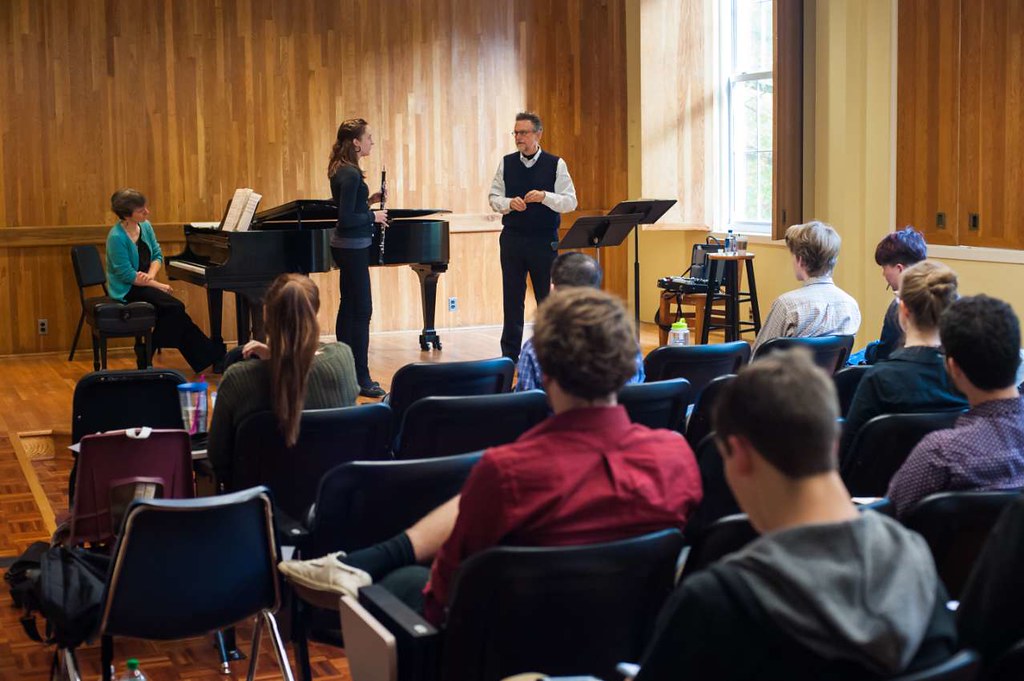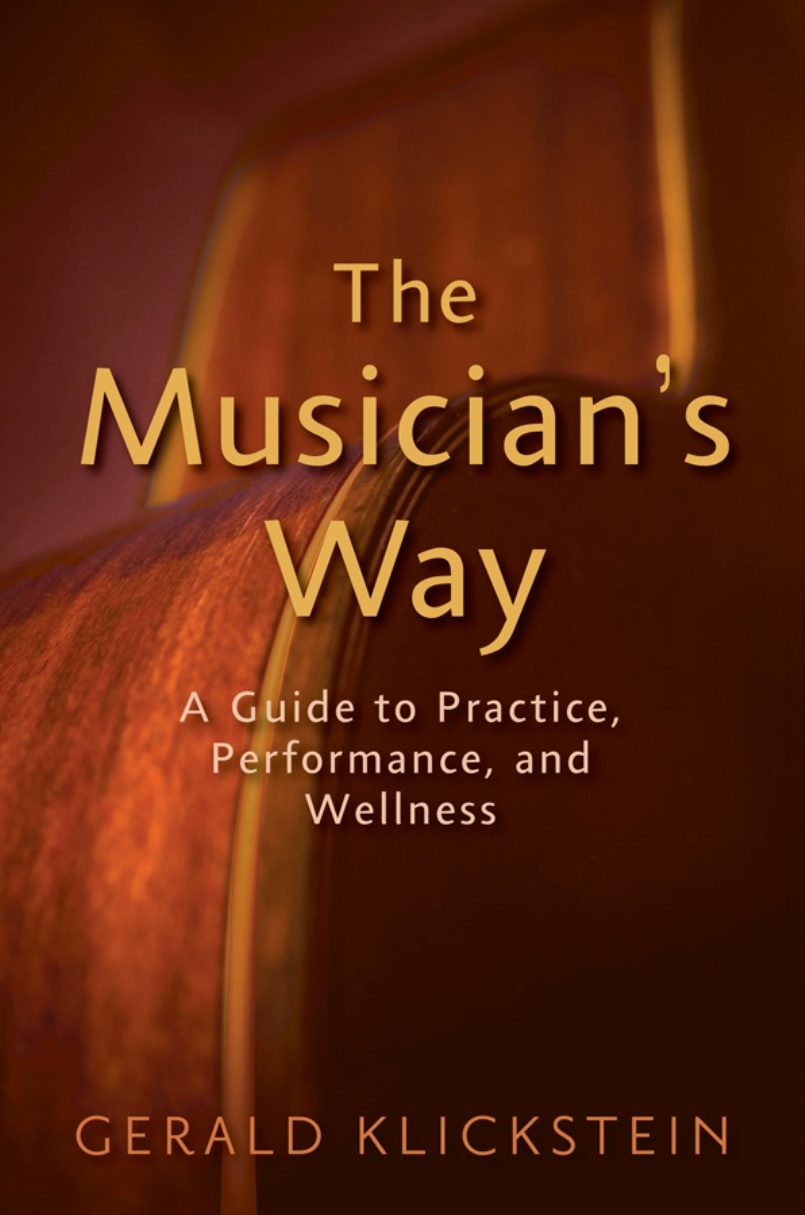
The Musician’s Way, p. 146
For music students to excel as performers, they need abundant opportunities to rehearse performance skills.
And one of the most important settings for them to do so is in studio classes.
The Musician’s Way as Studio Class Textbook
During studio classes, music students perform for and receive feedback from their lesson instructor as well as each other.
The Musician’s Way functions as the ideal text for such classes because it methodically covers the topics that students need to know to practice and perform effectively. It also enables students to gain many more competencies than when teachers forgo using texts.
Here are some ways that teachers and students can tap The Musician’s Way to boost learning outcomes.
Tips for Teachers to Use The Musician’s Way as Studio Class Text:
- Online Discussions: Assign portions of the text for students to discuss online via an LMS such as Blackboard. Choose a different student each week to lead discussions.
- To delve into performance anxiety, you might assign over an eight-week period sequential portions of Chapters 7-10, concisely following up in person with students in lessons and studio classes.
- To strengthen student practice habits, you could employ a parallel strategy with Chapters 1-6; to cover occupational health, do the same with Chapters 12-13.
- In-Class Applications: Use content from the book during studio classes.
- To equip students with accurate self-evaluation skills, after each studio class performance, have the performers verbally carry out the performance evaluation strategy found on pages 202-203.
- To improve student stage deportment, devote a portion of one class for students to practice and refine their entrances and exits, bowing, and the other stage deportment skills itemized on pages 171-177.
Tips for Students:
- Specify Goals: Determine precise objectives for every studio class.
- To upgrade your memorization skills, you might learn a concise, accessible solo piece, apply the memorization principles from Chapter 4 of The Musician’s Way and then, after doing practice performances on your own, test your memorization by performing the piece in one or more classes.
- To overcome performance anxiety, you could similarly master a short, easy piece using the practice techniques in Part I of The Musician’s Way and then present under-tempo performances in multiple studio classes, experimenting with the anxiety-management strategies spelled out in Part II.
- Organize Your Own Classes: Put together student-run performance classes to create more chances for you to practice performing.
- Perform compositions for your peers, rehearse strategies from the text such as for feeling ahead and handling errors, and politely comment on each other’s work.
- Consistently video-record your performances and then evaluate them later on.
- Perform Often: Performance skills can only be assimilated through consistent, smart practice. So learn lots of accessible repertoire, and then perform frequently in both teacher-run and student-led classes, adapting the techniques in the book until they become your own.
Procedural & Declarative Know-how
By using The Musician’s Way in studio classes, students acquire both declarative and procedural know-how, and it’s crucial that they do because it doesn’t suffice for students to merely sound good on stage. They also need to know how to perform effectively, solve performance problems, advance their skills, project a positive stage presence, and so forth.
Such inclusive competencies empower students to become the free-thinking performing artists that they deserve to be.
Moreover, with The Musician’s Way in hand, teachers can cover material efficiently, achieve more educational goals, and, most of all, bolster student success.
* * *
The Musician’s Way is the only book to delineate strategies whereby aspiring musicians can attain the inclusive skills of expert performers, and it’s available in both print and e-book editions. Read reviews.
Related posts
Assessing Your Performance Skills
The Musician’s Way Study Guide
Teaching with The Musician’s Way, I
Teaching with The Musician’s Way, II
© 2020 Gerald Klickstein
Subscribe to The Musician’s Way Newsletter

